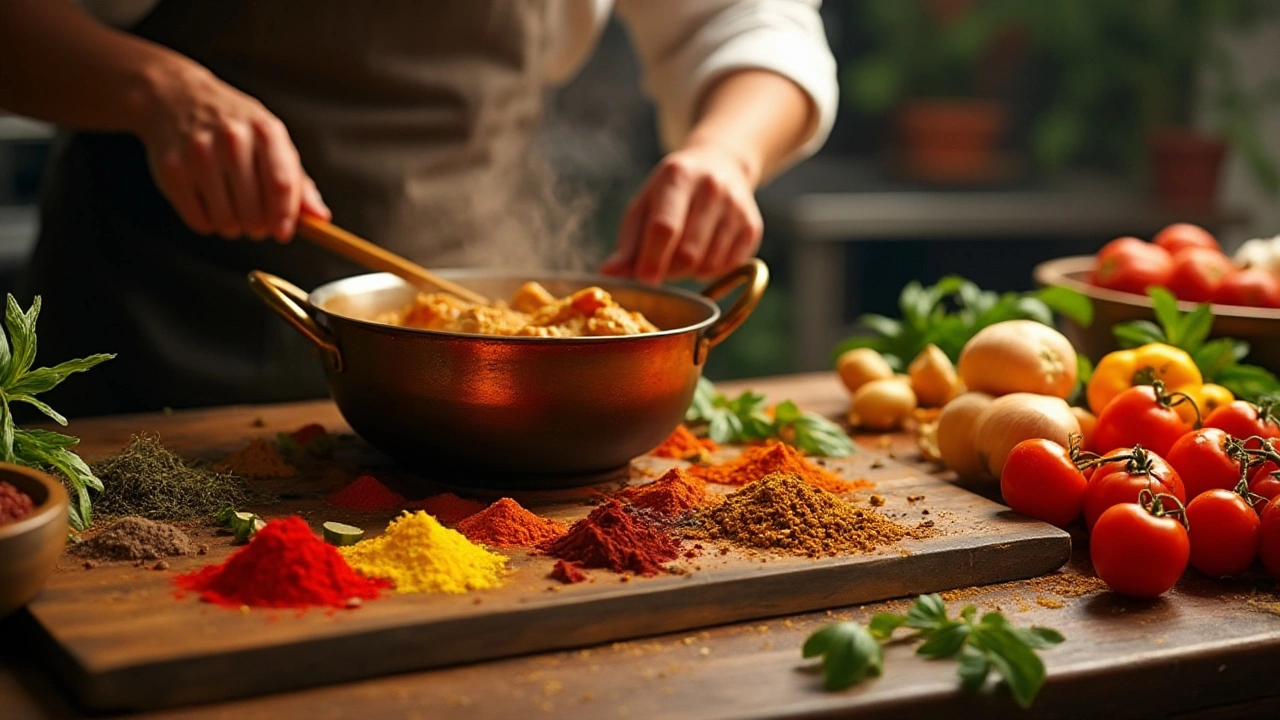Curry Recipe Hub: Master Indian Flavors
When you hear curry recipe, a blend of spices, herbs, and liquids cooked to create a flavorful sauce that coats proteins or vegetables. Also known as curry, it forms the backbone of Indian home cooking. A good curry ingredients, spices like cumin, coriander, garam masala, plus aromatics such as onion, ginger, garlic are the building blocks. Turmeric, adds earthiness and that signature golden hue is a classic, but you can swap it without losing flavor. Tomatoes, brighten the sauce and provide subtle acidity spark a lot of debate among cooks. And when you want a velvety finish, creamy curry, relies on dairy, coconut milk, or nut pastes for a silky texture is the answer. curry recipe skills grow when you understand how these pieces fit together.
First, know that a curry recipe encompasses three core steps: spice blending, sauce simmering, and flavor balancing. The spice blend defines the flavor profile, the simmer lets the aromatics meld, and balancing adds the right pinch of salt, acidity, or sweetness. This triple‑step approach mirrors what you’ll see in posts about classic Indian dishes, where the authors break down each stage. For example, the guide on “Curry Ingredients” lists the must‑have spices and suggests when to toast them for extra depth. When you master that, the rest of the process feels smoother.
What about turmeric? Some cooks think you can’t do a curry without it, but you really can. The “Can You Cook Curry Without Turmeric?” article shows how ingredients like paprika, mustard seed, or a dash of saffron can mimic its color and earthy taste. Swapping works especially well in dishes where the golden shade isn’t essential, such as tomato‑heavy curries. Knowing this gives you flexibility for pantry gaps or dietary tweaks.
The tomato controversy is another hot topic. “Do Tomatoes Belong in Curry?” points out that tomatoes add acidity, moisture, and a subtle sweetness that can cut through rich spices. In regional styles like South Indian curries, tomatoes are a staple, while some North Indian gravies stay tomato‑free, relying on yogurt or cream for tang. Understanding when to include tomatoes helps you tailor the sauce to the dish you’re aiming for.
If you crave a silky mouthfeel, dive into the “What Makes Curry So Creamy?” piece. It explains that dairy (like cream or yogurt), coconut milk, and ground nuts each bring a different layer of smoothness. The key is to add the creamy component at the right time—usually toward the end of cooking—to avoid curdling or breaking the sauce. A quick tip from the article: stir in a spoonful of cashew paste for a nutty veil without overwhelming the spices.
All these insights tie back to the central idea that a curry recipe is adaptable. Whether you’re a beginner looking for a simple dal‑based curry or an experienced chef experimenting with fusion twists, the posts in this collection cover the spectrum. You’ll find practical tips on ingredient swaps, the science behind flavor balance, and step‑by‑step guides for classic and modern variations.
Ready to dive deeper? Below you’ll discover a curated set of articles that walk you through each aspect— from essential spice mixes to the creamy secrets that make a curry unforgettable. Let’s get cooking!

Perfecting Chicken Curry: Simmering Times and Tips
Discover the ideal simmering time to achieve a rich and flavorful chicken curry. This guide explores the art of cooking curry, with tips to enhance texture and taste. Learn about the best ingredients and methods to unlock deliciousness. Whether you're a seasoned chef or a novice, these insights will elevate your curry-making skills.